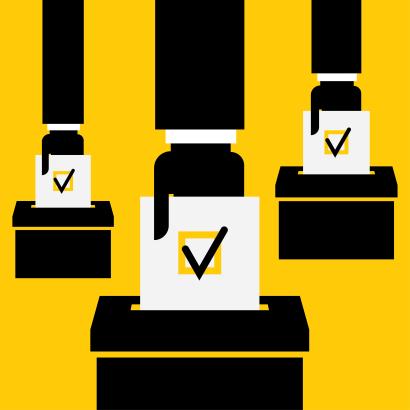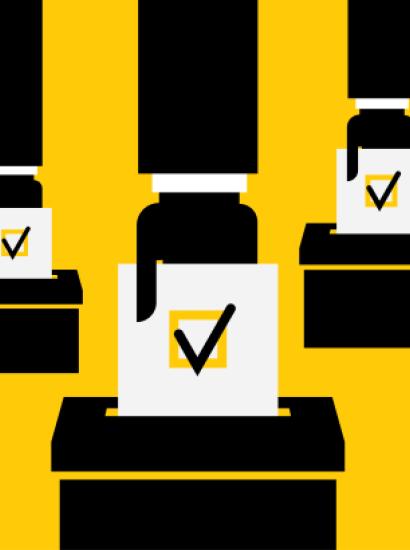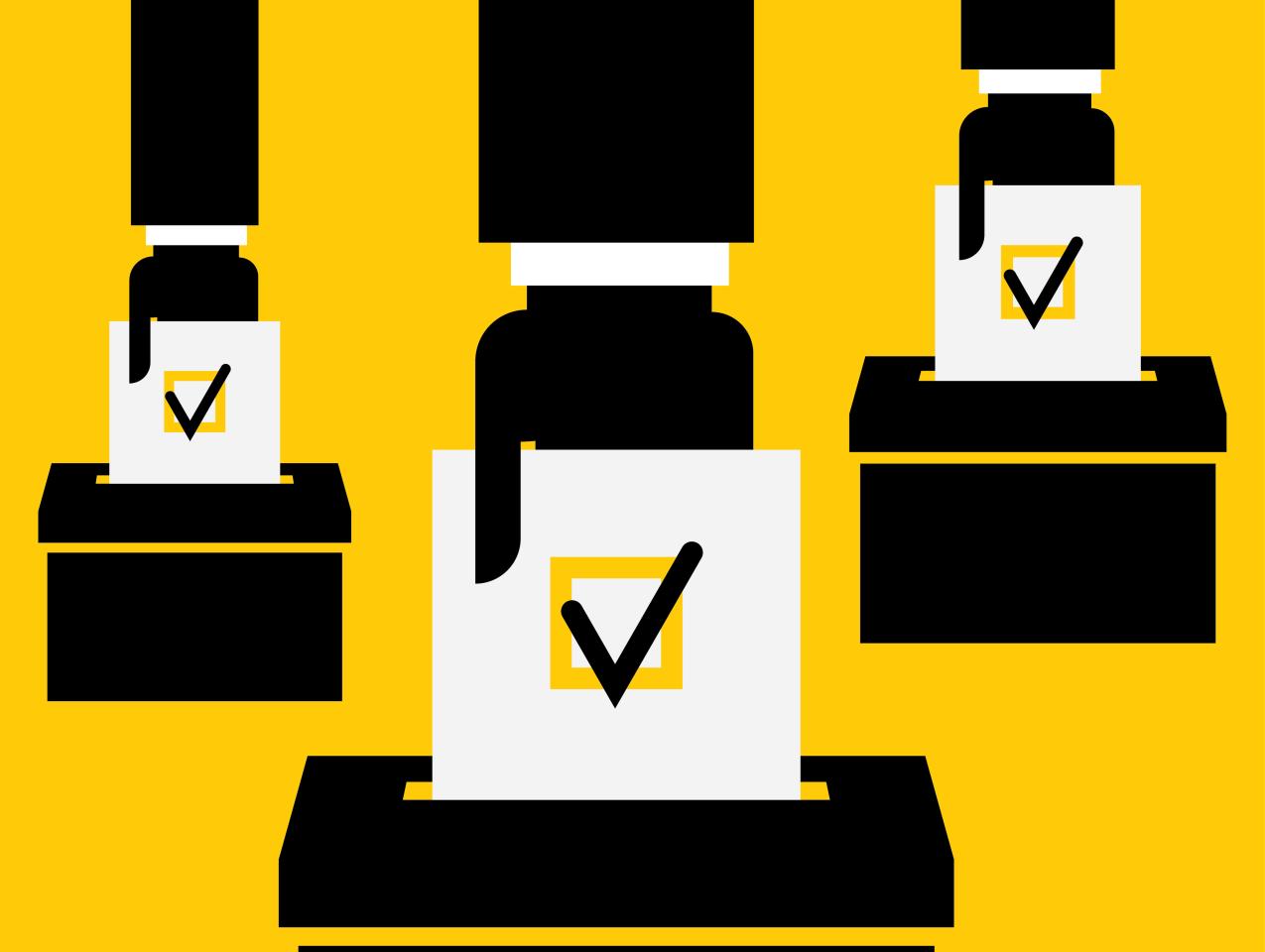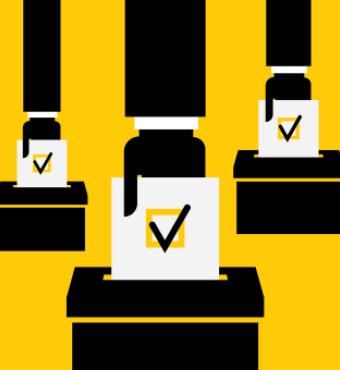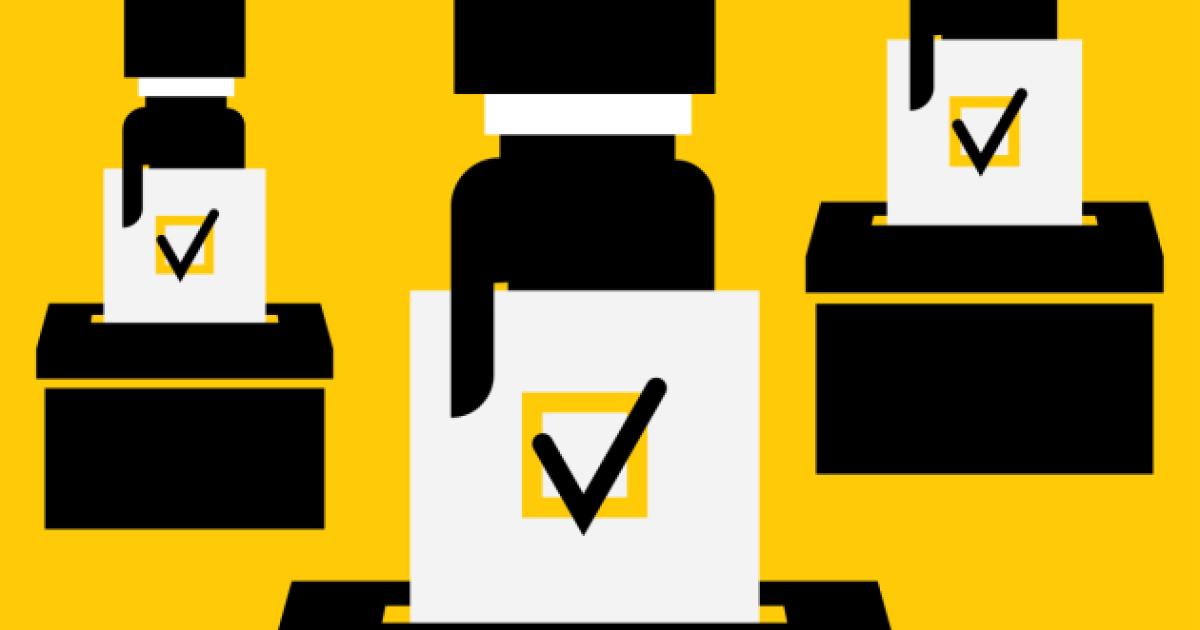- Politics, Institutions, and Public Opinion
- Campaigns & Elections
- State & Local
- California
Not that California elections are predictable, but most every cycle over the past twenty years has played out as follows:
8:00 p.m.: Polls close.
8:01 p.m.: Democrats uncork the champagne.
8:01:30 p.m.: Republicans surf Zillow for property in Nevada.
In this regard, the 2018 vote was little different—certainly so at the top of the ticket. Lieutenant Governor Gavin Newsom was elected the state’s fortieth governor. When all the votes are counted (in California, that will take a while), Newsom’s share will approach 60 percent—about the same level of success that Jerry Brown enjoyed in 2010 and Gray Davis twelve years prior to Brown.
At last count, Democrats had claimed, or were ahead, in six of California’s seven other state constitutional offices. The lone outlier: Marshall Tuck, a former charter-school executive vying to be California’s next Superintendent of Public Instruction (here’s a column on public education that he wrote last year for Hoover’s Eureka channel).
There was drama down the ticket, in the form of congressional races. Only, it wasn’t the apocalyptic moment some had anticipated—the House of Representatives changed hands well before polls closed in California.
Going into Election Day, Republicans feared losing up to seven congressional seats in Southern California and the Central Valley. Once the dust settles, Democrats may have succeeded in flipping three or four seats. A good night for Speaker-to-be-Pelosi, but not quite a driving force behind a “blue wave” (that never reached a coast-to-coast tsunami force).
Two months from now, Newsom and his fellow officers will take their oaths in Sacramento. The governor and a newly minted State Legislature then will get down to the business of budgeting and making good on campaign promises. Incumbent and newly elected congressional members will do the same in the nation’s capital.
That leaves us with plenty of time, in the interim, to speculate on what 2019 has in store for California.
Meanwhile, here are four observations from Tuesday’s vote in the Golden State.
Money (Still) Talks. Newsom drew the equivalent of an inside straight in the governor’s race—stronger name recognition, his party enjoying a nearly twenty-point in voter registration, a convenient foil in an unpopular Republican president, and an opponent largely missing from the airwaves.
He also held a commanding edge financially.
Newsom raised nearly four times more money than Republican John Cox. As you’ll see in this chart, he spent it at a casual pace after the June primary—the tell-sign of a candidate who never felt threatened.
Where else was money a factor?
Three ballot measures turned into spending wars—Proposition 6 (repealing last year’s gasoline tax increase), Proposition 8 (capping dialysis costs), and Proposition 10 (loosening state rent control restrictions).
The “no” campaigns spent great sums. All three measures failed.
In the case of Prop 8, dialysis clinics spent at least $111 million to defeat the measure. If you had your television tuned to a local channel in California in early November, Prop 8 ads both pro and con were inescapable. The result was confusion—each side having you believe the other meant to kill kidney patients. And in California, baffled voters typically reject ballot measures.
Inanity. To some California Democrats, “oil” is a four-letter word. This year, for example, a pair of Democratic Bay Area congressmen wrote to Governor Jerry Brown asking that he end fossil fuel extraction in the Golden State.
Naturally, oil companies would avoid Democrats like the plague— and vice versa.
Yes?
No.
In 2018, oil concerns donated millions to Democratic candidates. Why? Republicans are a scant minority in both legislative chambers. The ability to push legislation—and, at times, block it—rests with finding a coalition of pro-business Democrats. Hence, the donations.
That’s an ironic existence.
Now, for the near-comical: back to the ballot to Proposition 12. Approved by voters, it requires that all eggs sold in California come from cage-free hens by 2022. This isn’t chicken feed: in California, the egg business is a $1 billion industry.
Who hates the decision the most (besides the makers of chicken cages)? Why, People for the Ethical Treatment of Animals (PETA), of course. I’ll let them do the explaining.
Here’s a thought: why couldn’t the Legislature deal with this?
Open Season on the Open Primary? Some California election math: between them, Newsom and Cox collected 7.14 million votes. In California’s Senate race, Democratic incumbent Dianne Feinstein and her challenger, Democratic State Senator Kevin de León, collected about 6.3 million votes (remember, this will change as more ballots are processed). As such, it’s a repeat of what California experienced in 2016: the presidential race drew 13.2 million votes; the all-Democratic Senate race drew just 12.25 million votes.
It doesn’t take a genius to figure the fall-off: Republicans, presented with the choice of two Democrats, take a pass.
Or, in some cases, ordinarily right-leaning voters base their decision on logic the Founding Fathers didn’t envision.
I confess: I voted for de León not because I preferred him to Feinstein (as the author of sanctuary-state legislation and a proponent of single-payer care, he’s too liberal for my tastes). Rather, I wanted to “punish” Feinstein for her conduct during the Kavanaugh confirmation—and I’m guessing I’m not alone in that sentiment, which is why she presently is just below 55 percent in what may be her weakest showing since her reelection in 2000.
Approved by voters in 2010, California’s open primary was meant to give moderates and centrists a better shot at the general election by doing away with closed partisan primaries. However, the last two Senate contests have produced three very liberal Democrats and a fourth, in Feinstein, who scrambled to the left in the general election to shore up her Democratic bona fides among disgruntled progressives.
Middle of the road, it’s not. Which is why the open primary might be looking at some road repair.
Too Many Voters Are Mailing It In. One nightmare scenario avoided in this election: the House of Representatives hanging in the balance while California counts votes at a glacial pace.
In 1974, the first of Jerry Brown’s four gubernatorial runs, voting-by-mail accounted for all of 4.4 percent of ballots cast in that election. By 2014 and Brown’s fourth and final run, it had risen to 60.5 percent. In theory, this is good for democracy—give voters more options, the better the chance they’ll participate.
But here’s the problem: Californians receive the mail ballots early (this year, eight days into October), but don’t vote accordingly.
Take the example of Orange County, home to a handful of competitive congressional races. About three-fifths of the county’s 1.6 million voters used mail ballots in this election. More than one-third of those ballots were anticipated to be dropped off at polling places or put in the mail on Election Day—a scenario one Democratic strategist called “Palm Beach 2.0” ( in honor of the Bush-Gore Florida recount).
Call it a case of reaping what California sowed: be it mail-in ballots, provisional voting, or the ability to leave ballots unmarked, the Golden State has gone out of its way to make the democratic experience user-friendly.
But maybe too friendly.
In June 2016 it took almost six weeks for the California’s Secretary of State, the state’s chief elections official, to certify the results (that’s with almost 60 percent of the vote mailed). December 7 is this year’s target date.
It will be difficult to stay on that schedule in future elections, as more California counties transition to the state’s Voter’s Choice Act and mail each registered voter a ballot.
And what happens in March 2020, when California will host a presidential primary that could be a major factor in the choice of the next Democratic candidate? The “road to the White House” won’t shut down for six weeks while California counts ballots.
Anyone know the name of a good repairman?








